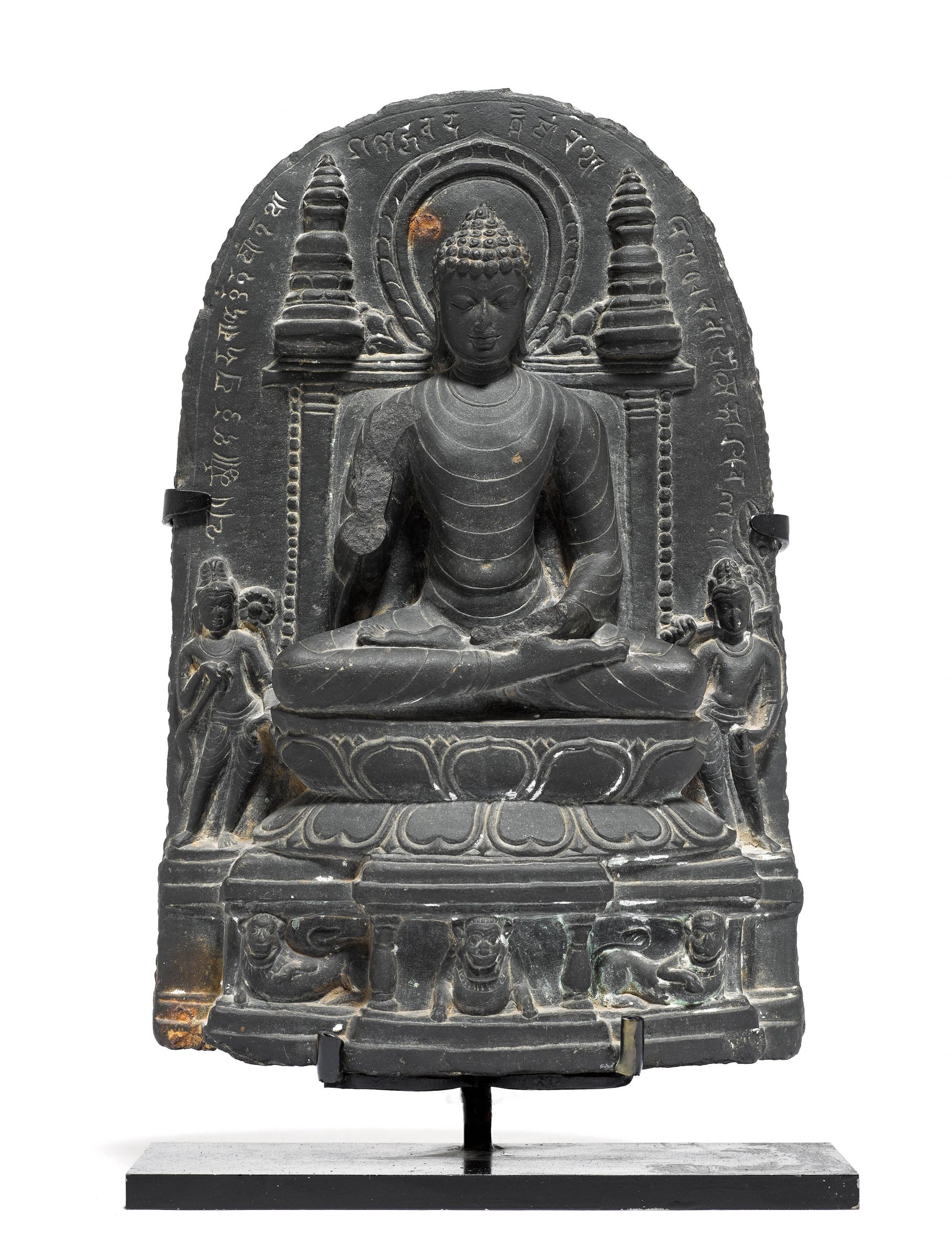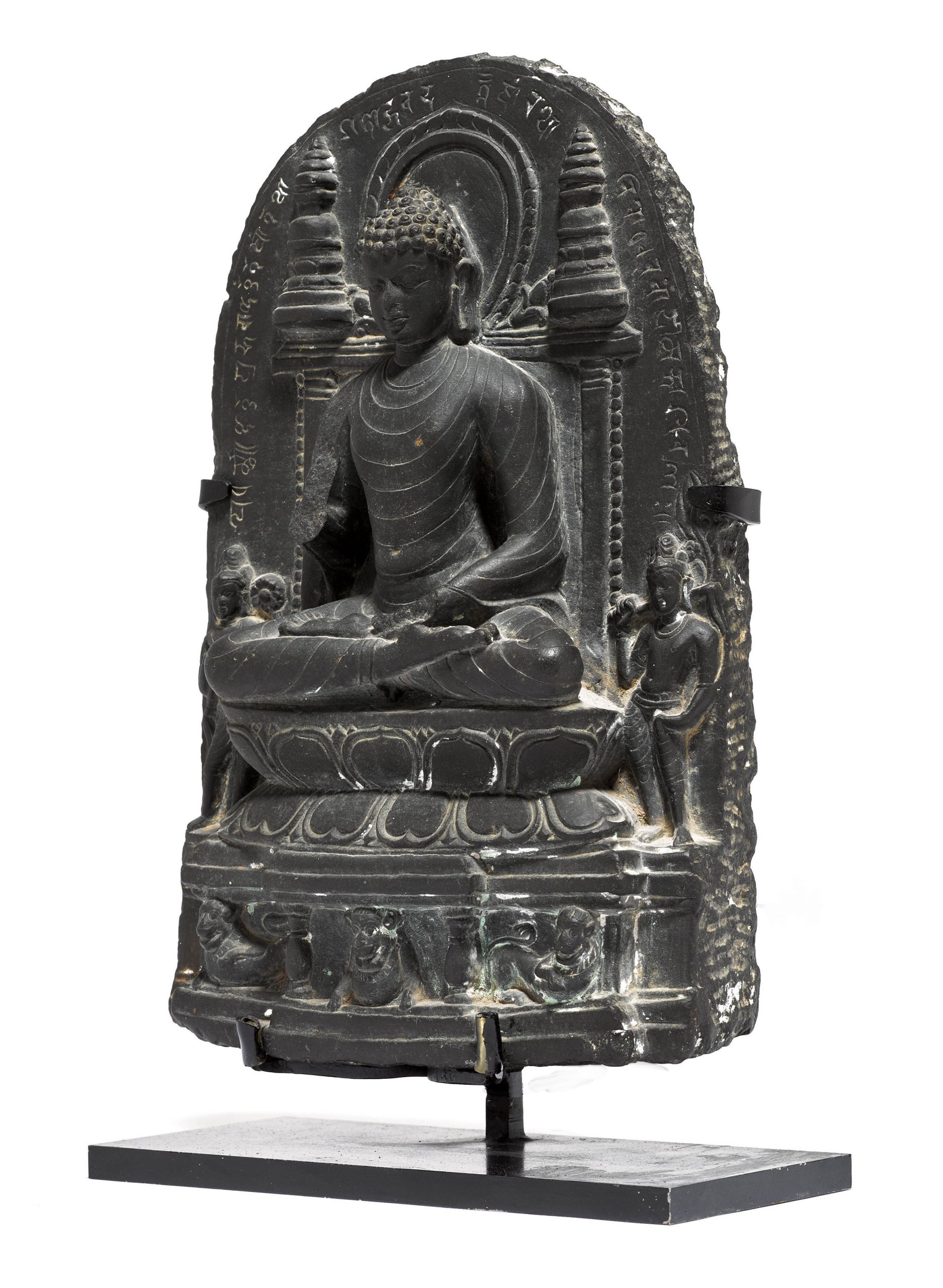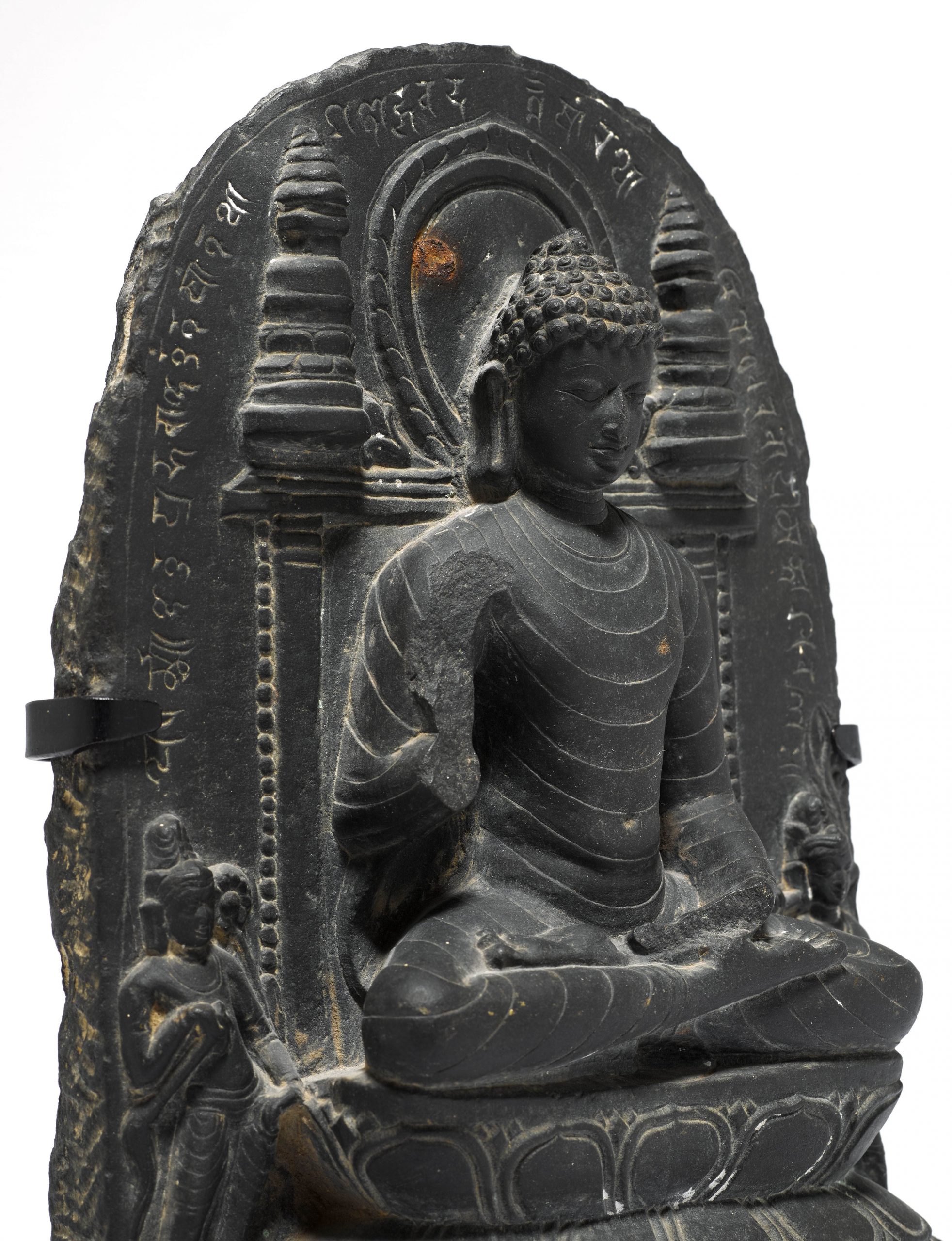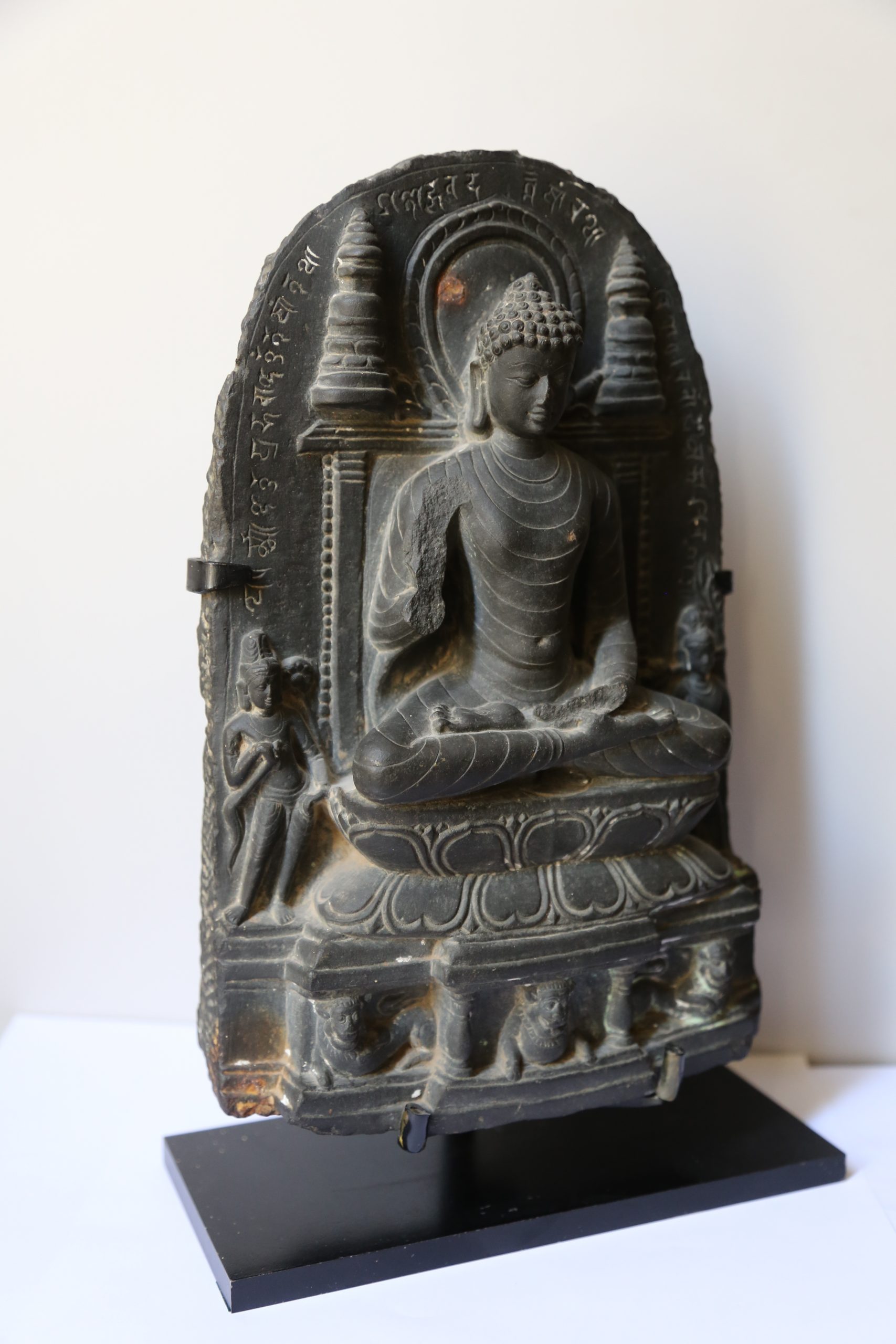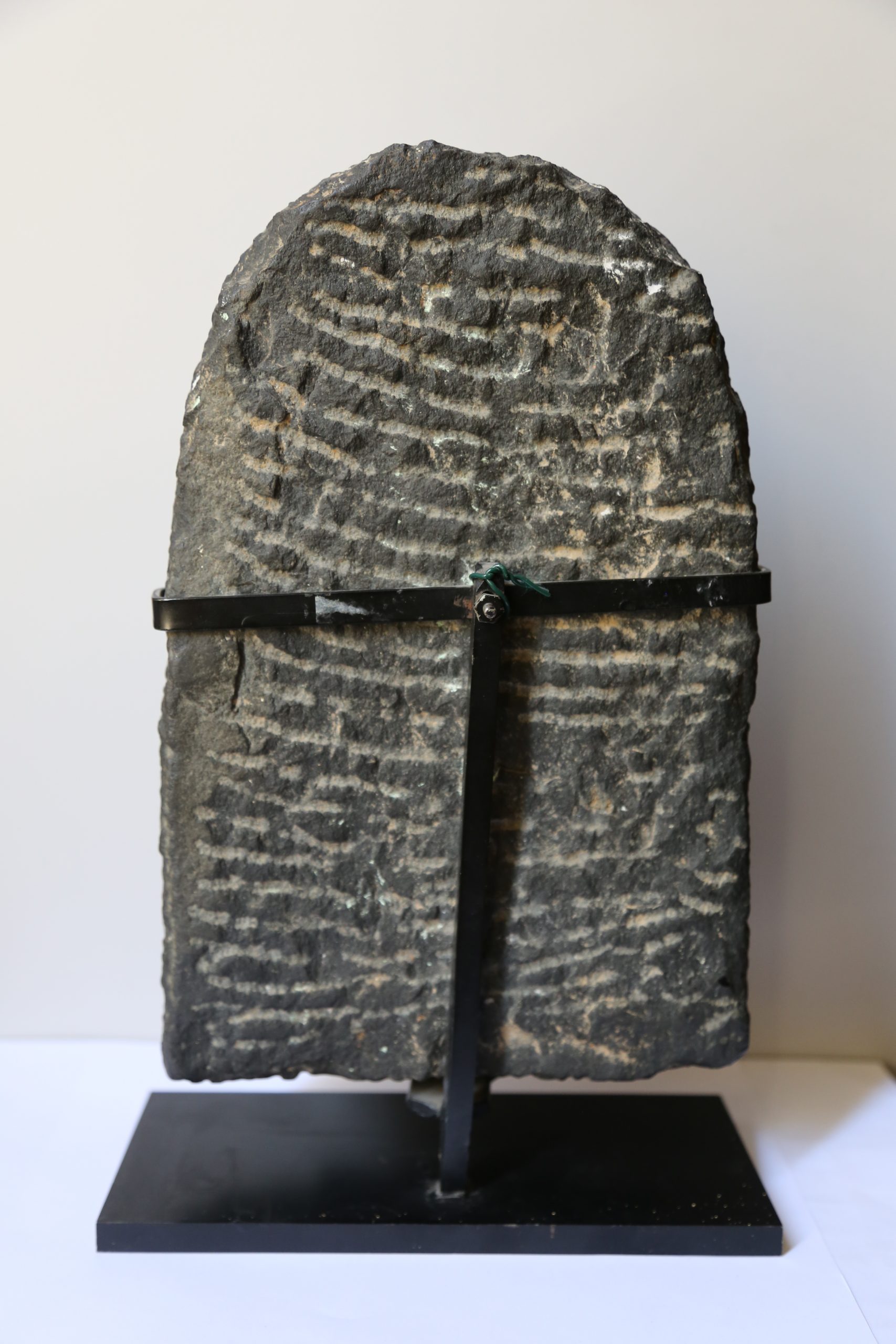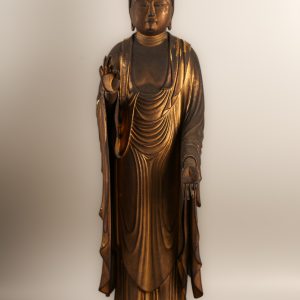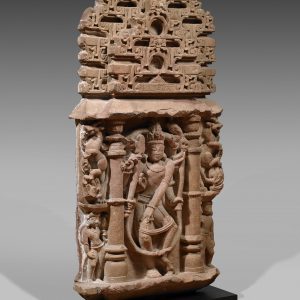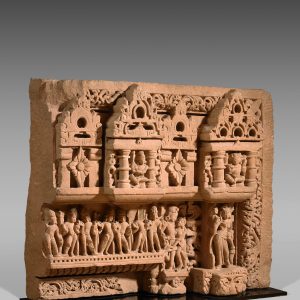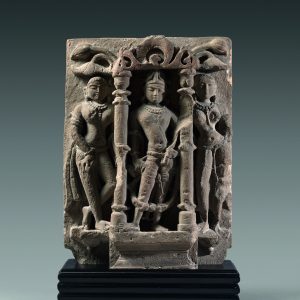Seated Buddha
Black stone
North-Eastern India
9th -10th century, Pāla period
H. 28 cm or 11 in
Description
The polish of its black stone, the finish of its details, the elegance of its proportions: all the harmony and balance of Pāla art from the 9th-10th centuries are brought together in this very beautiful Buddhist stele from North-East India.
The Buddha Śākyamuni is seated in vajarapryaṅkāsana on a lotus, with the two soles of his feet visible. With his right hand he was sketching the fear-allaying gesture (abhaya mudrā) while his left hand rests in his lap. The monastic garment he is wearing covers his two shoulders and the folds take the form of very graphic concentric circles. A nimbus with flames also suggests the light radiating from his being. We must admire his beautiful face, of a remarkable finesse, with an extreme attention given to the details and contour lines. The chin and the mouth are slightly prominent and the arched eyebrows join in a V shape. The characteristic features of Buddhahood appear clearly: the tuft of hair (ūrṇā) in the middle of the forehead, the cranial protuberance (uṣṇīṣa) covered with small curls, the distended earlobes and the wheels marking the soles of the feet (cakrāṅkitahastapāda).
Characteristic of the Pāla pieces, Buddhist characters and motifs surround the Buddha. On either side, he is accompanied by two bodhisattvas wearing jewels and standing in a subtle contrapuntal pose. These are Avalokitésvara on the right of the Buddha, the personification of compassion, holding a blossoming lotus (padma), and Mañjuśrī, the master of transcendent wisdom, holding his sword. The Buddha is seated on a characteristic “lion throne” (siṃhāsana), while in the upper part are two stūpa, symbols of Buddhism. Finally, an inscription can be read on the background of the stele. It is a summary of the Buddha’s teaching:
“Things that arise from a cause, the Tathāgata has said the cause and the way to stop them: so says the great religious man.”
This stele, because of its quality and excellent condition is absolutely admirable. The round top, the absence of openwork, the incredible limpidity and readability of the shapes represented are all characteristics of the early Pāla art, around the 9th-10th centuries.
Provenance: Private collection, Switzerland, since the end of the 1980s.

